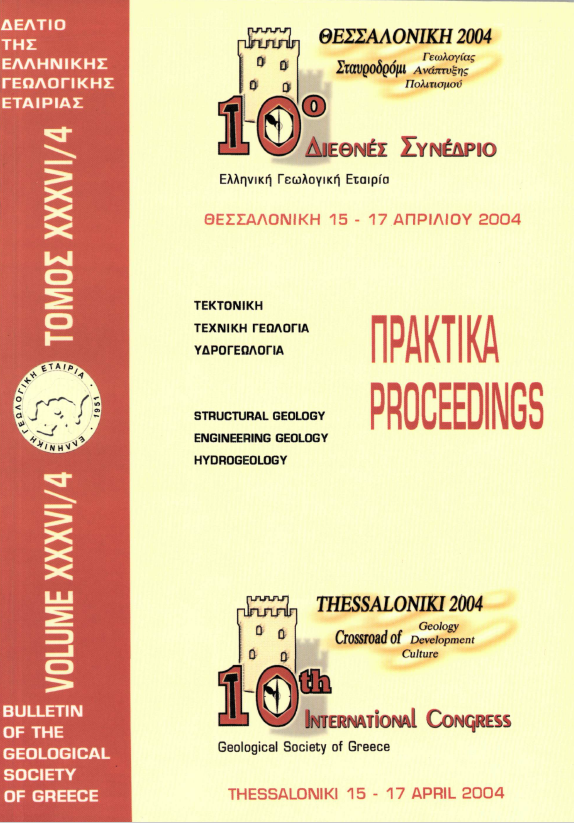CONTRASTING GEOMETRY BETWEEN ALPINE AND LATE- TO POSTALPINE TECTONIC STRUCTURES IN ANAFI ISLAND (CYCLADES)
Abstract
A significant change is observed in the geometry of the major faults in Anafi Island from Ν to NE dip in the alpine structures to S to SW dip in the late to post-alpine. Several thrust faults dipping to the NE preserved at the central-eastern part of the island form a nappe pile of Cretaceous HT/LP metamorphic units emplaced over a parautochthonous nonmetamorphic flysch of partly Eocene age without development of metamorphic structures (deformation phase Di). The development of detachment normal faults dipping to the SW (deformation phase D2) deformed the previous thrusts together with the post alpine continental sedimentary sequence of Miocene age, occurring in the northern and western part of Anafi. Asymmetric to the SW folds are observed at the lower part of the Upper Miocene sediments as well as numerous shear sense indicators along the undulating surface of the detachment above the underlying alpine units. The deformation weakens towards the upper part of the Upper Miocene sediments. An intensely sheared molassic type formation of probable ?Oligocene-Early Miocene age was distinguished between the alpine units and the detached Upper Miocene sediments. High angle normal faults dipping to the SW deform all previous structures (D3). The extensional deformation phases D2 and D3 are related to the opening of the Cretan backarc basin during Tortonian - Early Pliocene.
Article Details
- How to Cite
-
Soukis, K. I., & Papanikolaou, D. J. (2004). CONTRASTING GEOMETRY BETWEEN ALPINE AND LATE- TO POSTALPINE TECTONIC STRUCTURES IN ANAFI ISLAND (CYCLADES). Bulletin of the Geological Society of Greece, 36(4), 1688–1696. https://doi.org/10.12681/bgsg.16575
- Section
- Tectonics and Geodynamics

This work is licensed under a Creative Commons Attribution-NonCommercial 4.0 International License.
Authors who publish with this journal agree to the following terms:
Authors retain copyright and grant the journal right of first publication with the work simultaneously licensed under a Creative Commons Attribution Non-Commercial License that allows others to share the work with an acknowledgement of the work's authorship and initial publication in this journal.
Authors are able to enter into separate, additional contractual arrangements for the non-exclusive distribution of the journal's published version of the work (e.g. post it to an institutional repository or publish it in a book), with an acknowledgement of its initial publication in this journal. Authors are permitted and encouraged to post their work online (preferably in institutional repositories or on their website) prior to and during the submission process, as it can lead to productive exchanges, as well as earlier and greater citation of published work.



